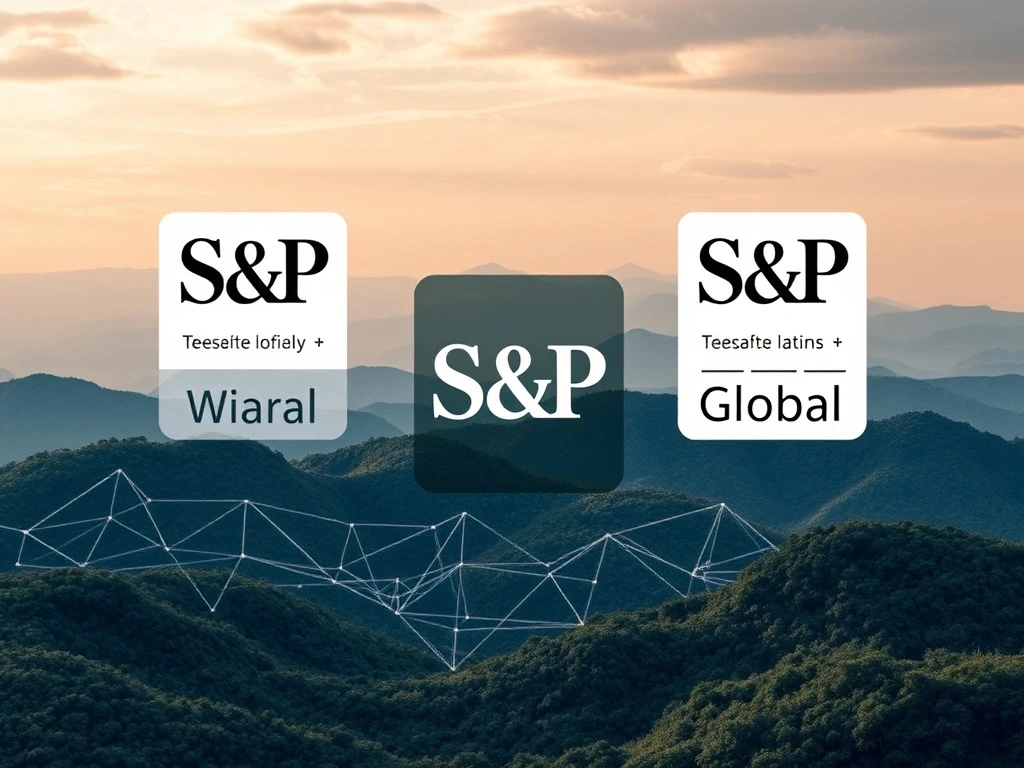Sky Protocol Achieves Groundbreaking ‘B-‘ Credit Rating from S&P Global

The cryptocurrency world recently witnessed a significant milestone. S&P Global, a leading traditional finance credit rating agency, assigned a ‘B-‘ credit rating to Sky Protocol. This marks the very first time a major agency has rated a decentralized finance (DeFi) platform. This groundbreaking assessment signals increasing scrutiny and integration between traditional finance and the evolving DeFi landscape.
Sky Protocol’s Historic ‘B-‘ DeFi Credit Rating Explained
S&P Global Ratings officially assigned a B- issuer credit rating to Sky Protocol, formerly known as Maker Protocol. This unprecedented move represents a pivotal moment for the entire decentralized finance sector. The rating forms part of S&P’s broader stablecoin assessment, initiated in December 2023. This program evaluates stablecoin issuers’ ability to maintain their fiat currency pegs. Specifically, the review covers the creditworthiness of Sky’s liabilities, including its USDS and DAI stablecoins, along with the sUSDS and sDAI savings tokens.
For its USDS stablecoin, Sky Protocol received a “4” rating on S&P’s peg stability scale. This “constrained” rating indicates concerns about USDS’s ability to maintain its peg to the US dollar. The scale ranges from “1” (very strong) to “5” (weak). Sky Protocol operates as a decentralized lending platform. Users can borrow cryptocurrency-backed loans. Its USDS stablecoin, vital for lending and borrowing, holds the position as the fourth-largest by market cap. It commands approximately $5.36 billion at the time of writing, according to CoinMarketCap. S&P defines a default on the protocol’s liabilities as “a haircut imposed on token holders.” The agency highlighted key risks for such a default. These include depositor withdrawals exceeding available liquidity and credit losses surpassing available capital.
S&P Global Identifies Key Concerns for DeFi Stability
The S&P Global rating for Sky Protocol pointed to several inherent weaknesses. These include high depositor concentration and centralized governance. Furthermore, the protocol shows reliance on its founder. Regulatory uncertainty in the DeFi sector also poses a significant risk. Lastly, weak capitalization remains a primary concern. However, these risks are partly offset by the protocol’s minimal credit losses and consistent earnings since 2020.
Andrew O’Neil, S&P Global’s digital assets analytical lead, commented on the rating. He stated, “A ‘B-‘ rating means that we believe the protocol currently can meet its financial obligations.” However, he added, “it would be vulnerable in adverse business, financial and economic conditions.” The Sky Ecosystem Asset-Liability Committee engaged deeply with S&P. They explored both traditional counterparty risks and DeFi-specific vulnerabilities. These include smart contract, oracle, bridge, and governance risks. Rune Christensen, Sky co-founder, holds nearly 9% of governance tokens. S&P’s assessment noted, “the protocol’s governance process remains highly centralized due to low voter turnout during key decisions.” Sky’s capitalization also presents a significant issue. The assessment indicated a risk-adjusted capital ratio of 0.4% as of July 27. This suggests a limited surplus reserve buffer for potential credit losses.
Broader Stablecoin Assessment and Market Implications
S&P’s assessment also lowered the protocol’s anchor rating to “bb.” This stands four notches below the US bank anchor of “bbb+.” The discrepancy primarily stems from the pervasive regulatory uncertainty within the DeFi sector. As cryptocurrency markets increasingly intertwine with traditional finance, more crypto entities undergo formal credit rating processes. S&P Global initiated its stablecoin stability assessment in December 2023.
The report also rated other prominent stablecoins. Circle’s USDC received a “2” (strong) rating. Conversely, Tether (USDT) and USDS both ranked “4” (constrained). O’Neil explained the distinctions. “Tether’s weaknesses are more around transparency,” he said. He further noted, “whereas USDS has a more complex asset base compared to USDC.” Moreover, USDS’s relatively weak capital position significantly influenced its ranking. This stablecoin assessment highlights varying levels of risk and transparency across the market. The first blockchain-based mortgage securitization also received an S&P Global rating. Figure Technology Solutions, a platform powering a blockchain-based marketplace, secured an “AAA” rating. This occurred in June for its latest $355 million securitization of mortgage assets.
The Future of DeFi Ratings and the Maker Protocol Legacy
This landmark rating for Sky Protocol, formerly Maker Protocol, sets a precedent. It signifies a growing trend towards greater transparency and accountability in the DeFi space. While the ‘B-‘ rating highlights significant challenges, it also represents a step towards mainstream financial recognition. The scrutiny from agencies like S&P Global can push DeFi protocols towards stronger governance models. Furthermore, it encourages robust capitalization strategies. This evolving landscape necessitates adaptation from decentralized autonomous organizations (DAOs). They must balance their decentralized ethos with the demands of traditional financial oversight.
The assessment process itself offers valuable insights for DeFi participants. It underscores the importance of addressing vulnerabilities like smart contract risks and oracle dependencies. Ultimately, these ratings can help institutional investors better understand and evaluate DeFi opportunities. This growing convergence between TradFi and DeFi promises a more mature and integrated financial ecosystem.







